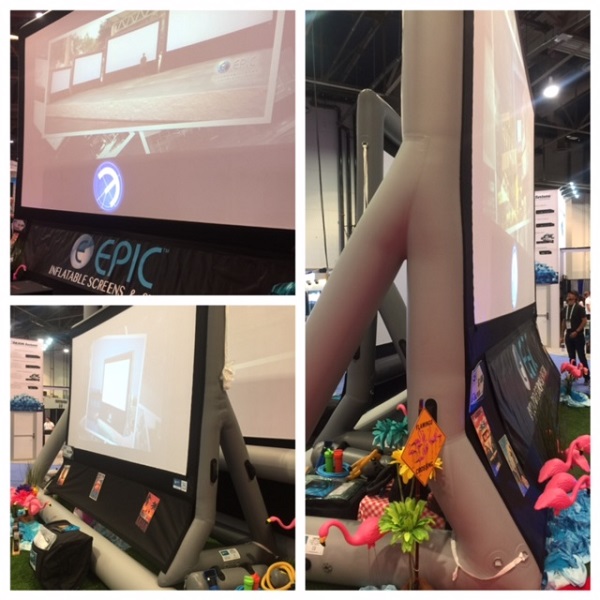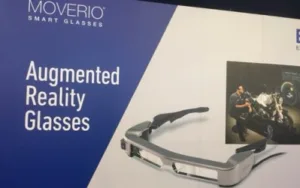Having just returned from walking every aisle of InfoComm 2018, searching for promising developments and products that might offer value for the education market, what does an educator see? As an educational technology director for decades, with a significant track record in large educational technology and AV purchases, I look for both memes that make sense in education as well as the practical solution: the product that potentially meet a need or solves a pain somewhere in my organization.

Something crisply new and eye-catching can also spark a fresh idea in an educator’s mind. And at times, we chuckle when we see the emperor’s new clothes (vaporware, hype, or solutions in search of a problem to solve). Although the education-related offerings at InfoComm 2018 represented a very short field, here are some of the most interesting products (and question marks) for classrooms, museums and other learning environments:
The Promising
Flip Monitors. Classroom wall space is both inflexible and precious real estate in classrooms, so I was delighted to see the new flip monitors that can accommodate constrained wall space availability, varied uses and different content by merely flipping the display.
Classroom FLIP displays
Inflatable Screens. Large inflatable screens might seem old-fashioned to some, but moving shows, concerts, and events outside (e.g., fields, commons, courtyards and school stadiums) has long eluded the educational customer due to cost and hassle. That won’t be true any longer, since these large screens can be inflated and made operational in venues heretofore never considered.
 Inflatable screens: blow them up, tie them down.
Inflatable screens: blow them up, tie them down.
Epson’s Moverio AR glasses. Although AR headgear was secreted away in the deep dark recesses of a booth here or there, Epson moved their new Moverio AR glasses out into the spotlight, driving a lot of traffic and high interest. These look oh-so-appealing to educators.
Animatron à la Lincoln. A booth that drew teeming traffic and constant photographing to the smaller exhibit hall at IC18 involved a remarkably lifelike animatronic Abraham Lincoln. The future of museums will never be the same. Or is the whole thing too eerie? Take a look:
A Quilla Update. Quilla, a real-time ideation and collaboration solution that is appropriate for many training in educational settings, has been showcased at Infocomm for several years. This year QuirkLogic introduced mobile device sharing into the Quilla ecosystem. Since anything created on Quilla is stored in the cloud, it makes sense now that they have added Android OS compatibility, enabling phone, tablet, and chromebook usage. Plus they also added a nice touch of color. For a quick look, see this recorded interview:
VR in Education. Although largely absent from the exhibit hall, VR made a limited entrance with ed-market talks by Julian McCrea of Virtual Film School and Grace Lau of the Global Nomads Group. These two speakers explored the promise and potential of VR in education, demonstrating two successful implementations, the first focusing on student-created content, the latter focusing on the role of VR in teaching empathy in the social studies curriculum. Take a look at the links above.
Julian McCrea and Grace Lau promote VR in education.
The Questionable
I must confess that I did run into some display technologies, which I sincerely hope, stay as far away from schools and classrooms as possible, at least at this stage in their development. These included spinning holographs and transparent screens inside of domes. The first makes an educator wonder: “why bother?” and the second just makes the viewer sick.

